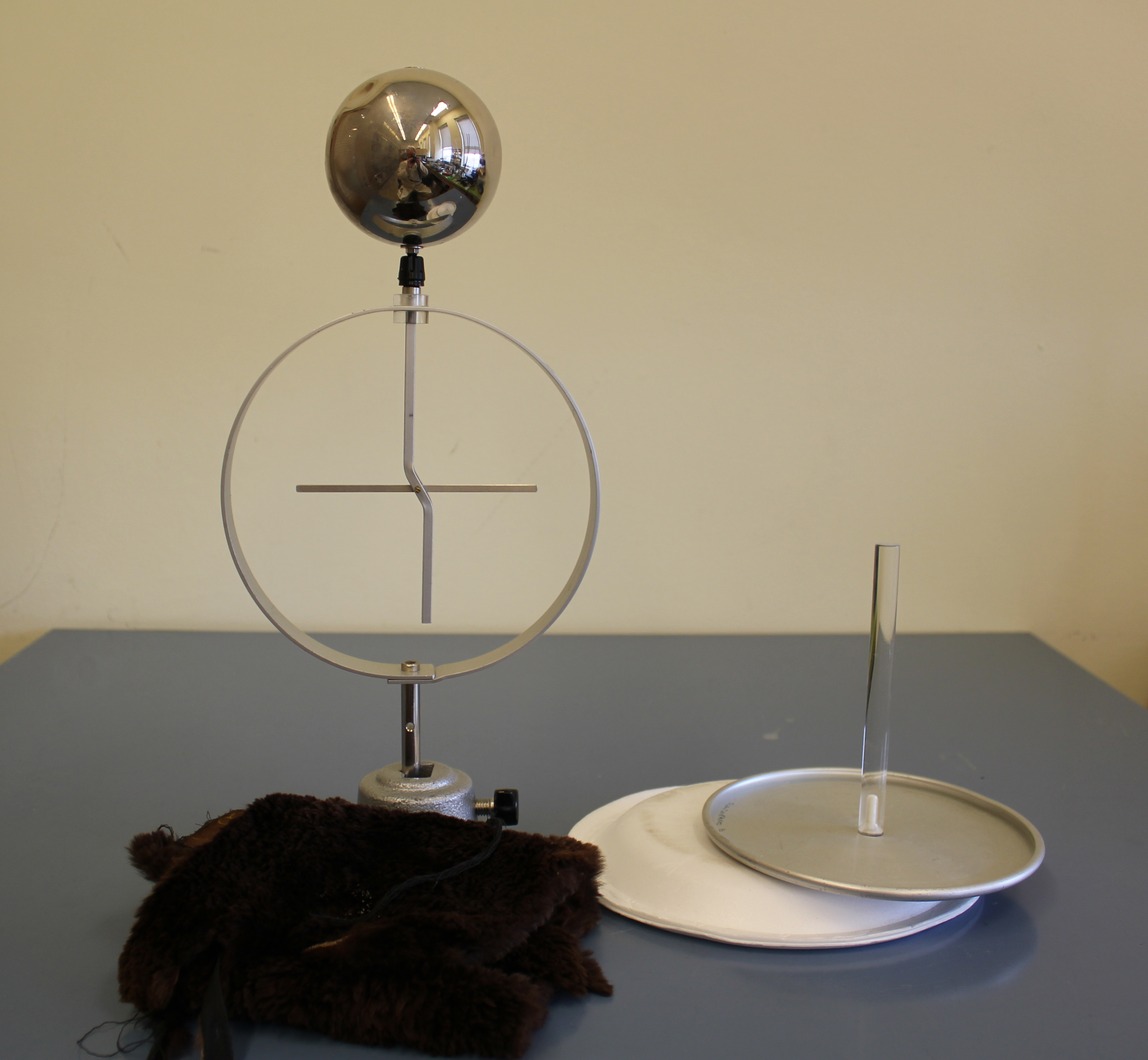Charging by induction : Différence entre versions
Sauter à la navigation
Sauter à la recherche
| Ligne 20 : | Ligne 20 : | ||
File:IMG 2492.JPG | File:IMG 2492.JPG | ||
</gallery> | </gallery> | ||
| + | {{#widget:YouTube|id=mUTm7nOr4fg}} | ||
{{#widget:YouTube|id=dHm8Ay-7Iq4}} | {{#widget:YouTube|id=dHm8Ay-7Iq4}} | ||
Version actuelle datée du 21 mars 2018 à 19:52
Back to 5A - Electrostatics
PIRA index: 5A40.10
Description
Charges redistribute themselves in a conductor under the influence of an external electrostatic field. For example, a positive charge close to a neutral conductor will attract the negative charges in the conductor to the closest surface, leaving the opposite side with a positive charge.
With this principle, an object A can be charged if it is grounded while another charged object B is held close. The induction pushes the charges in the ground. Disconnecting the ground and taking away the charged object B, object A will be left with an opposite charge. The electrophorus works on that principle.
Equipment
Instructions
Keywords
Images & Movies
